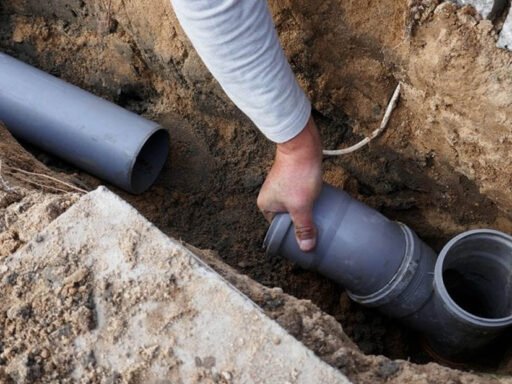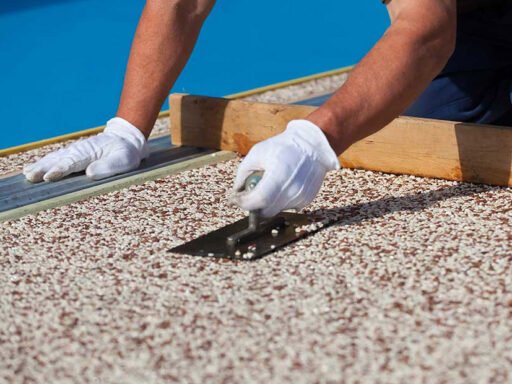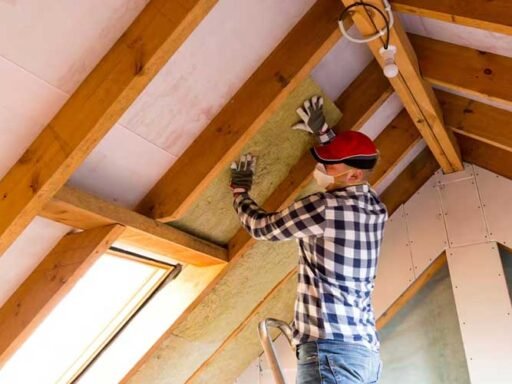Basements are remarkably useful spaces when they’re done right. From being a handy place to store those things you can’t bring yourself to get rid of or as an extra liveable room, a properly finished basement is a thing of beauty. Just think what you could do with that space: a home gym, office, cinema… the options are literally endless.
But before we can get onto building the basement of your dreams, there are a few things you need to do to get it ready. Here’s how to go about preparing your basement for finishing:
Dehumidifiers
Anyone who’s ever opened the door and been met with that musty ‘basement smell’ knows that basements can be humid.
They’re generally cooler than the rest of the home, surrounded by damp soil and often fairly poorly ventilated. The result is that the normal humidity in the air becomes trapped in there and leads to all kinds of problems. Mold and mildew thrive in humid basements and those are the absolute antithesis of a healthy, liveable space.
Installing a dehumidifier can help make those problems a thing of the past.
Types of Dehumidifier
There are two types of dehumidifiers commonly installed in basements; refrigerant and desiccant. A refrigerant dehumidifier works by cooling down the air as it passes over and condensing the water vapor. Desiccants draw the air over a material which absorbs it directly (think those little packets of silica gel you get in some products). They both have their uses but generally unless your basement is very cold, a refrigerant model will be ideal.
Selecting the right size
Dehumidifiers are graded by how much water they can suck from the air in a 24 hour period. To choose the right one you’ll need to know roughly how damp your basement is, how big it is and the normal temperature. You can get accurate measurements with some basic tools or just estimate (erring on the side of caution).
Generally speaking, the bigger and wetter the space, the more powerful a dehumidifier you’ll need. Whichever model you choose, it’s important to position it so it can be most effective; so as closely to the source as possible.
Applied Waterproofing
Interior waterproofing comes in many forms but the simplest and easiest are applied methods. We’ll look at two particularly effective ones; crystalline solutions and good old stucco. If you’re renovating an older property’s basement, these are particularly essential techniques to know.
<h3>Crystalline Solutions
Concrete may seem fairly solid, but on a microscopic level, it’s actually full of channels and holes. When hydrostatic pressure is placed on the outside of your walls, it can force water through them. Crystalline solutions block these tunnels up chemically.
When painted on, crystalline solutions react with the concrete of your walls forming tiny crystals to arrest water flow. Even better, exposure to moisture re-activates them, making them effective for a very long time indeed.
Stucco
Stucco has been around for a very, very long time. Why? Because it’s a very effective way of waterproofing a wall and, when done right, it can look pretty great too.
Multiple layers of a dense, concrete-like material are built up on the wall. The result is a strong barrier, roughly an inch thick. That’s a lot of wall for water to find its way through. It also has the aesthetic bonus that you can finish it in lots of different ways to match your tastes.
Sump Pumps
A sump pump is a great way to deal with water that’s threatening to come up from below. When it rains, water finds its way into the soil around your basement. When this water level rises too much, it can force itself through your slab flooring. Sump pumps aim to move it out of the way before this happens.
They sit in a small pit dug under your basement floor and when this ‘sump’ fills with water, they’re activated by a float switch. This turns on an impellor which creates an area of negative pressure, drawing water through a discharge hose and away from your floor.
It’s a good idea to install one with a battery backup. They’re most likely to be needed during storms and that’s exactly when the power is most likely to go out.
Interior French Drains
An interior French drain is something like an underground gutter. They provide an easy path for water to flow through. They’re set into the floor slab along the lengths of your basement walls and will conduct water to your sump pump.
They consist of a perforated pipe embedded in crushed stone. This allows water in where it can be trapped and conducted safely away. They’re particularly useful in avoiding basement flooding.
Vapor Barriers
There are lots of different things that go by the moniker ‘vapor barrier’ but generally, they’re there to block water from coming into contact with your finished surfaces. Ideally, they’re installed behind your insulation (no one wants soggy insulation) and tucked into the French drain trench.
Different versions have different properties and levels of breath-ability and could include anything from polyethylene sheeting to bitumen coated paper. Generally, the less permeable the better when finishing a basement, but it’s worth remembering that condensation is a thing too.
Slab Replacement
There’s no nice way to say this, but sometimes the damage is done. When a concrete floor has deteriorated beyond a certain point, the most economical thing to do is rip it up and start again. Large, growing cracks, heaving, pitting- there are lots of signs that it’s time to replace your slab.
The process goes like this:
- Demolition and removal
- Digging down
- Adding crushed stone and vapor barriers
- Pouring a nice new slab without any of the previous issues.
This is a great opportunity to install the other floor based waterproofing methods and get it all done at once too.
Dig Downs
Of course, sometimes you just want a little bit more space to finish off your dream basement. Digging down is always an option.
Not only will this give you more headroom, making your basement a more comfortable space, it’s a brilliant opportunity to address issues with your foundations and waterproofing too.
There are some caveats though: it’s not simply a matter of grabbing a spade and digging. Care has to be taken to ensure that nothing compromises structural stability and everything stays up to code. It’s not a cheap process, but it can be transformative.





